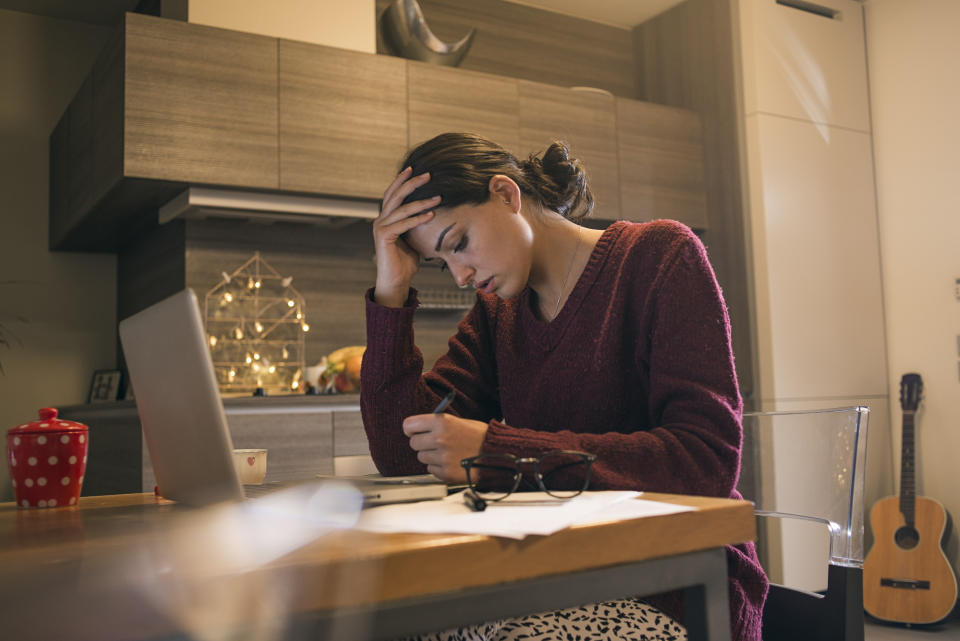How to help workers with seasonal affective disorder during the pandemic

It’s universally acknowledged that the long, cold and dark winter days can take their toll on our mental health. We tend to stay inside more, exercise less and in particular, there’s something dispiriting about starting and finishing work when it is dark outside — and only briefly seeing daylight at lunchtime.
For some people, however, the general malaise lots of us experience is far more intense. Seasonal affective disorder, otherwise known as SAD, is a major depressive disorder brought on by the longer periods of darkness.
It can cause low mood, low energy and lethargy, as well as a lack of concentration and motivation. Symptoms also include irritability, anxiety and a general lack of interest in things too.
READ MORE: Why we need to take holidays and time off when working from home
Seasonal affective disorder is thought to impact around three in 100 people in the UK, but with many already struggling with poor mental health as a result of COVID-19, it’s possible that SAD will have even more of an effect than usual.
“2020 has been fairly dark — in a metaphorical sense — and adding long periods of literal darkness on top of this may lead to some serious mental ill-health among workers,” says David Price, workplace wellbeing expert at Health Assured. “Compounding this are the restrictions on movement — loneliness is often worse even during a typical winter.”
READ MORE: Why trust and control issues stop remote workers from doing their jobs properly
Amid a second wave of COVID-19, further lockdowns and the ongoing impact of the crisis on the economy, it’s no surprise that employees are feeling the strain. Thousands are facing redundancy and the UK unemployment rate has surged to its highest level in over three years, the Office for National Statistics (ONS) said earlier this month. We’re missing seeing friends, relatives and normality — and the future looks uncertain.
With this in mind, it’s even more important for employers to support their workers in these difficult times. After all, happier employees are better at their work — and as Price says, you only need to make small changes to accommodate those with seasonal affective disorder.
WATCH: What to ask in a job interview
Introduce more light
Many employees are continuing to work from home, particularly those living in higher risk areas. But for those who have returned to the office, it’s important to make sure the workplace is light, bright and airy.
“Some workplaces are rather dark and unexciting places, especially when the sun starts setting earlier and earlier. And some people find themselves seated at desks and cubicles situated far from the nearest source of natural light,” Price says. “Try rearranging your floor plan to maximise the natural light available, and consider moving people suffering SAD closer to windows.”
Support remote workers
Remote work has its own challenges and pitfalls, which will be felt even more keenly as the darkness sets in. Rather than cracking the whip with surveillance software, support home-workers and make sure they are taking regular breaks away from their desks.
READ MORE: What happens when our 'surge capacity' is depleted at work
“Encourage good habits, and make sure to communicate with people — get them to make the most of the sunlit hours with regular breaks and walks,” says Price. “Encourage more outdoor time: employees should be taking lunch away from their desks and home workspaces.
“Time away from your desk helps clear the mind, reset and means you can attack the afternoon’s tasks afresh. But try encouraging people to go further than just the kitchen. Assuming the winter weather isn’t too harsh, lunchtime can be well-spent going for a quick walk around the block. It’s about getting as much sunlight and positivity into the workday as possible.”
Help out with health
Seasonal affective disorder can wreak havoc on appetite and general health, which can make the symptoms of SAD much more difficult to deal with. Extra support and gestures can help people feel appreciated, which can make a big difference.
READ MORE: How to lower the hidden costs of home working
“Sending out gift boxes to remote staff, filled with healthy alternatives, will be much appreciated,” Price says. “A lot of people suffering SAD benefit greatly from a SAD lamp or light box.
“A light box is a form of light therapy which uses fluorescent lights to simulate natural sun. It’s effective and recommended by the NHS. Look into subsidising the cost of these, especially for employees staying at home this winter.”
It’s important for people with seasonal affective disorder or any other mental health problems to seek professional help if they need to. Signposting access to support, from the NHS or charities such as Mind, can help employees feel less lost and alone if they’re struggling.

 Yahoo Finance
Yahoo Finance 